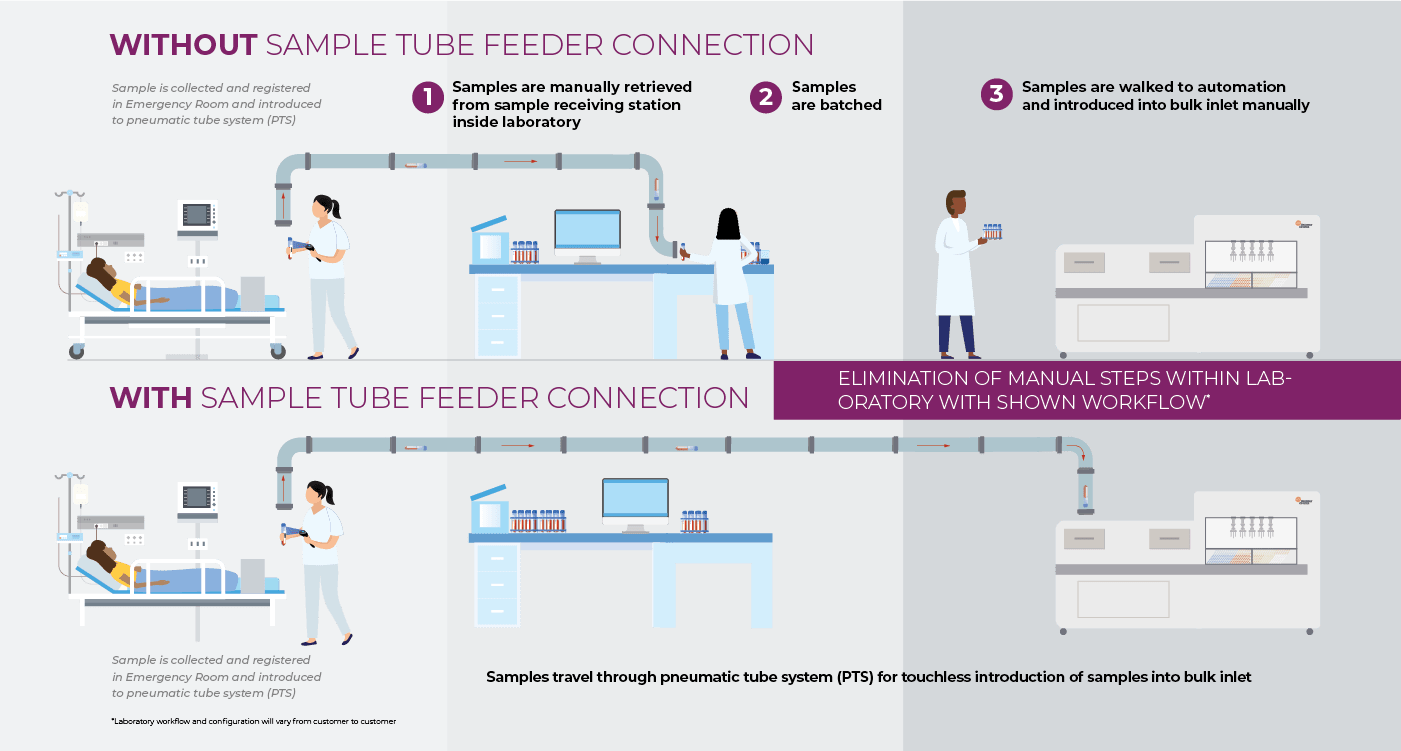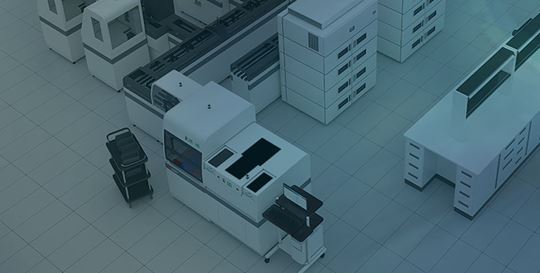Customers Talked
Increases in length of stay (LOS) in the emergency department (ED) are linked to lower patient satisfaction levels and increased expenditures, which can reduce overall profitability for hospitals.1,2 Various studies suggested a positive correlation between overall sample turnaround time (TAT), from blood draw to receipt of results, and LOS.3,4 While not the only factor impacting LOS, sample TAT continues to be a commonly measured indicator of laboratory performance.5,6
Automation across various points in the hospital has been instrumental in driving consistent TATs and reducing the number of manual steps performed by staff members.7,8 As an example, hospitals have invested in tube transport systems (such as pneumatic tube systems) to minimize the need for laboratory technicians to walk between the laboratories and ED wards to retrieve samples.7
Though tube transport systems have automated delivery of tubes to a centralized location within the laboratory, manual steps may still be required (for example, sample registration) before the sample can be introduced onto Total Laboratory Automation (TLA) for testing. These additional steps, which require sample handling, have the potential to increase TAT variability and expose staff to biohazards.9 To minimize idle time after sample arrival in the laboratory, one potential solution is to have a laboratory technician readily available to retrieve tubes from receiving stations at all times; however, this is an unrealistic expectation as laboratories are confronted with a growing shortage of trained staff.10
Our customers, who have invested in tube transport systems, have expressed that there would be value in automating sample delivery from tube transport systems or sample registration stations to the Power Express. Their belief, which is supported in studies, is that reducing manual steps, specifically during the pre-analytical testing phase, contributes to consistent TAT and improved safety measures—especially during peak workloads when laboratories are stressed.9,11
We Listened
To help our customers improve laboratory workflow, we have launched the Sample Tube Feeder connection with the recent release of Power Express (v5.0). The Sample Tube Feeder connection, an enhancement to the Bulk Inlet module, gives customers an option to connect the Power Express to third-party tube transport systems (including pneumatic tube systems and band conveyer systems) for touchless introduction of samples onto the Power Express.
With this connection, hospitals can deliver up to 700 STAT samples per hour from patient bedside or sample registration stations into the bulk inlet, leaving laboratories well-equipped to manage peak workloads. As an added benefit, while tubes are introduced into one of two bulk inlet entry bins, users have the flexibility to continue introducing tubes to the Power Express using the bulk inlet’s second bin or the dynamic inlet’s racks.* Users also have the flexibility to change loading priority (which bin or rack will load to the Power Express track first) to quickly adapt to fluctuations in tube arrival patterns, while still achieving a maximum throughput of 1450 samples/hour.
This feature can be suitable for various workflows in inpatient and outpatient settings. In situations where sample registration is not needed within the laboratory, samples can be introduced directly from tube transport systems into the bulk inlet through the Sample Tube Feeder connection, potentially allowing for touchless sample delivery from blood draw stations to the Power Express.

Alternatively, if sample registration is needed within the laboratory, the Sample Tube Feeder connection enables touchless delivery from sample registration stations to the Power Express.

By reducing the number of manual steps, the Bulk Inlet and Sample Tube Feeder connection positions laboratories to achieve consistent sample TAT, improve safety within the lab, and positively impact patient LOS. To learn more about the Bulk Inlet and Sample Tube Feeder connection, please contact your local Beckman Coulter Sales Representative or visit the Power Express webpage.

 English
English





